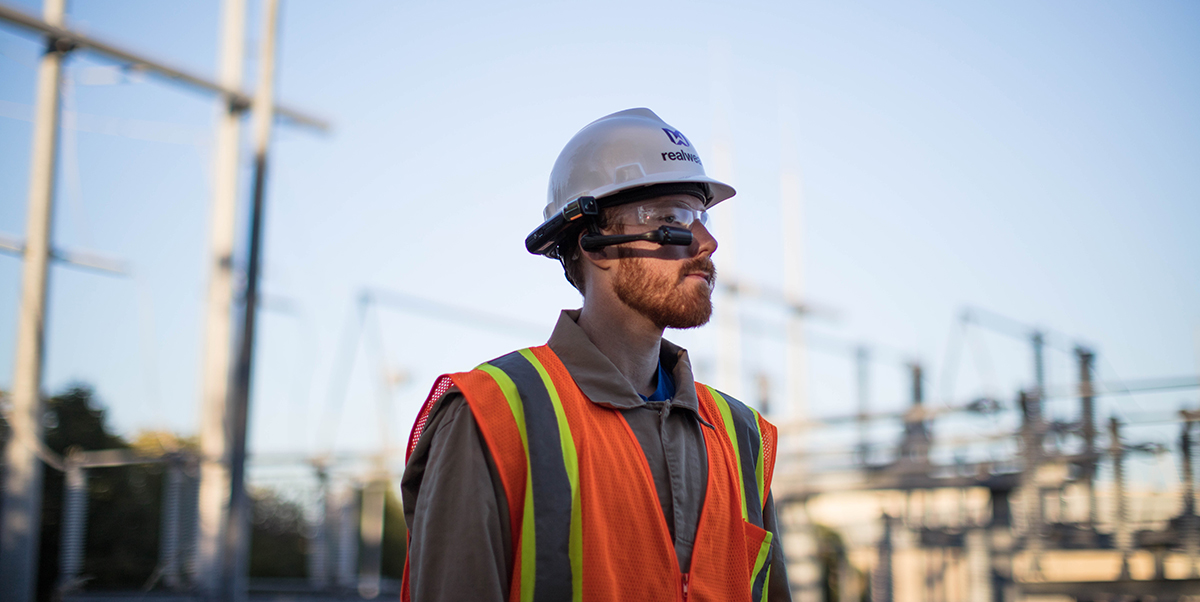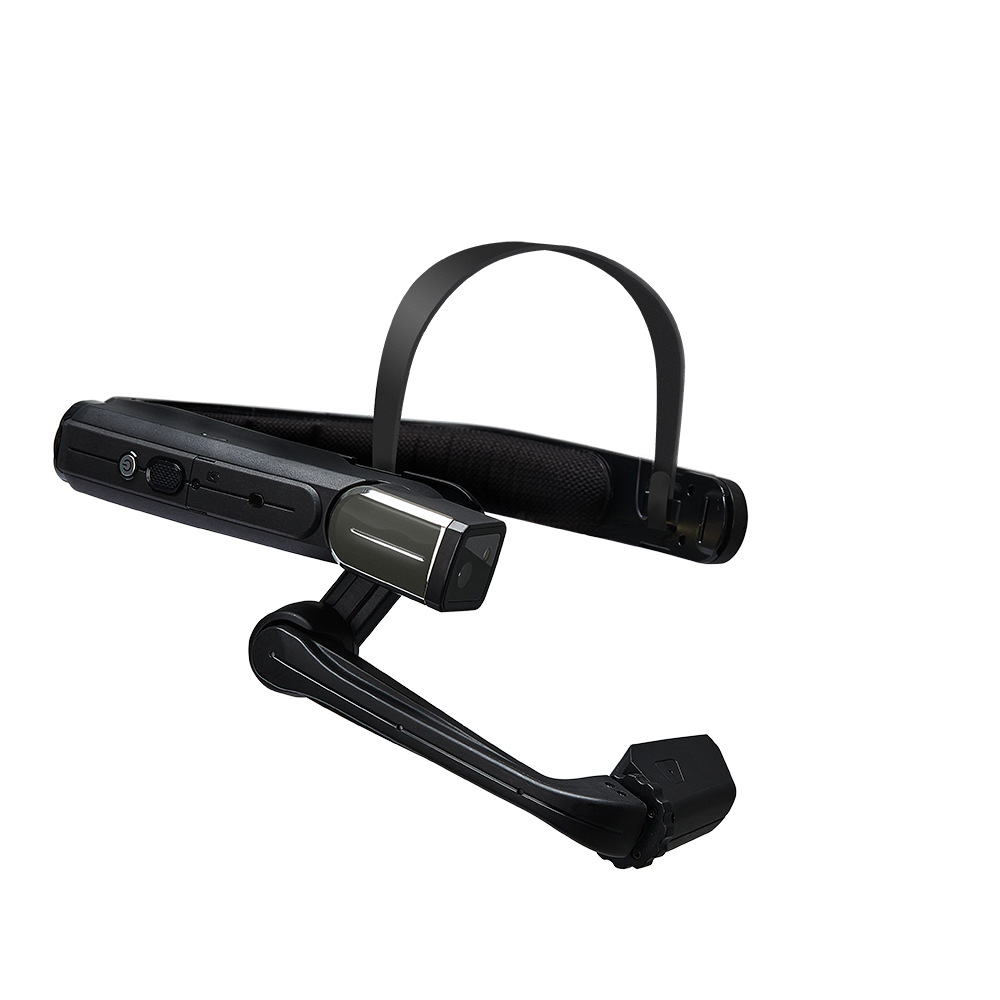
All about the smart glasses
What are data glasses?
Data glasses, also known as Smartglasses, are glasses which contain a computer. They belong to the so-called Head-Mounted Displays (HMDs).
Depending on the model, the user only receives information on the integrated display, which corresponds to the classic data glasses, or even creates an augmented reality or virtual reality. Depending on the device, the image is either projected onto a display close to the eye or directly onto the retina.
While glasses for virtual reality cut the user off from the outside world as far as possible and are therefore particularly suitable for training, education and entertainment purposes (films, computer games), Smartglasses for augmented reality, are preferred in the working world: the wearer of glasses continues to perceive reality as complete, but at the same time receives further information in his field of vision for example texts or markings directly on the object.
Smartglasses have voice control and can react to other signals such as blinking. This enables hands-free operation.
Because Smartglasses include a computer with its own processing power, they can provide the wearer with an almost infinite amount of information and allow other people to join in. The wearer of data glasses can thus share his or her complete field of vision with other people live and independent of distance.
Conversely, instructions, checklists, circuit diagrams and other visual information can be fed directly into the integrated display.
How is a Smartglass constructed?

First and foremost, the glasses consist of the temple and the lens. The temple serves as a holder for the optics and contains the electronics required for the control and function of the interfaces.
The data glasses also contain:
• a rechargeable battery
• a processor with a memory
• a microphone
• an audio output function
• Interfaces
• Sensors and antennas
Depending on the model, head trackers, depth and front cameras as well as cameras for detecting pupil movements may also be included.
How is the Smartglass used?
Smartglasses are used today in countless areas, for example as navigation systems for pedestrians, cyclists and car drivers, for virtual assistance during operations, for the translation of foreign-language texts (e.g. signs or menus) and for prospective customers who want to test a product as realistically as possible or optimise its design before buying it (e.g. cars or kitchens).
Smartglasses are also very popular in various branches of industry, especially in logistics and in the plant and mechanical engineering sector. For the latter, we present here the various possible applications in after sales service.
Customer and employee briefing
In the customer service department of plant and mechanical engineering, data glasses are particularly useful for the remote maintenance of machines: If the customer has a Smartglass, he can be effectively helped immediately and remotely via remote assistance.
To do this, the customer puts on his Smartglass during the conversation with the service employee, who connects to it in real time via the corresponding software. The employee now has the customer's complete field of vision in front of him and can give him direct instructions for troubleshooting or set virtual markers. Remote Assistance also enables live monitoring of success. In this way, errors can be quickly and reliably detected, analyzed and corrected.
Connecting to the Smartglass can be done via various end devices. The remote assistance employee is therefore not bound to a PC, but can also support the customer via his tablet or smartphone by logging on to the necessary service platform.
Not only customers can be guided excellently via a Smartglass, but also the own employees. Example: A technician takes care of a problem on site, but due to its complexity needs further information or direct instructions from an expert. In this case the employee can also use a Smartglass and receive immediate assistance from one or more experts. Waiting times and the need for another appointment are eliminated.
Efficient information retrieval
The Smartglass enables photo and video recordings from the wearer's perspective. This allows both correct and incorrect procedures as well as work requiring both hands to be documented accurately and easily.
In addition, the Smartglass can be used to access various databases to obtain further information. The information content is comparable to that of a Smartphone; here too, Smartglass offers the advantage of working hands-free. Furthermore, the user has the solution literally right in front of his eyes. The costly and time-consuming use of paper documents is eliminated, as well as the balancing act between machine and manual, folder or laptop.
What are the advantages of Smartglass?
Smartglasses combine the advantages of on-site service, which allows a personal assessment of the machine and the problem, with those of remote maintenance, which allows immediate support from anywhere.
In summary, you have the following advantages:
• significant time and cost savings for the company
• fast problem solution and short downtimes for the customer
• hands-free working during communication
• Overcoming language barriers
• Image and video recording functions
Remote maintenance via Smartglass is combined with maximum flexibility in terms of time and location. Employees are almost independent in terms of travel, as they can help the customer remotely if necessary. Waiting for a specialist who is currently not in the company is eliminated for the same reason.
Furthermore, Smartglass allows you to optimize your time planning: By eliminating time-consuming travel, the company's employees are significantly relieved. Appointments can be kept on time regardless of road traffic, without the need to schedule time buffers. This means attractive cost savings for the company. However, not only time is money, but also the travelling itself: By using a Smartglass, your company will no longer incur any travelling expenses in customer support.
The immediate, solution-oriented support ensures outstanding customer satisfaction. The use of state-of-the-art technology also gives the customer an extremely positive, professional impression of your company. Using Smartglass is proof that you are technically up-to-date and that you care about the complete satisfaction of your customers.
Conclusion
The Smartglass enables the virtual real-time display of real objects and work processes in a completely new dimension. It provides a virtual shoulder view and support regardless of the distance between the customer and the expert.
This makes the Smartglass an extremely helpful and recommendable tool for customer service, especially in the after sales area, which makes your daily work much easier in a modern way.
With ADTANCE Support you are guaranteed a modern, excellent Service 4.0. We offer you user-friendly, high-quality software solutions for the digitization of your customer service including remote assistance. Dive with us into the new digital world of data glasses with all its advantages and capabilities! We look forward to hearing from you.
In the next article we will introduce you to ADTANCE Predictive Maintenance (PM) and ADTANCE Process Visualisation and Monitoring (PVM) as further possibilities for digitisation in after sales service.